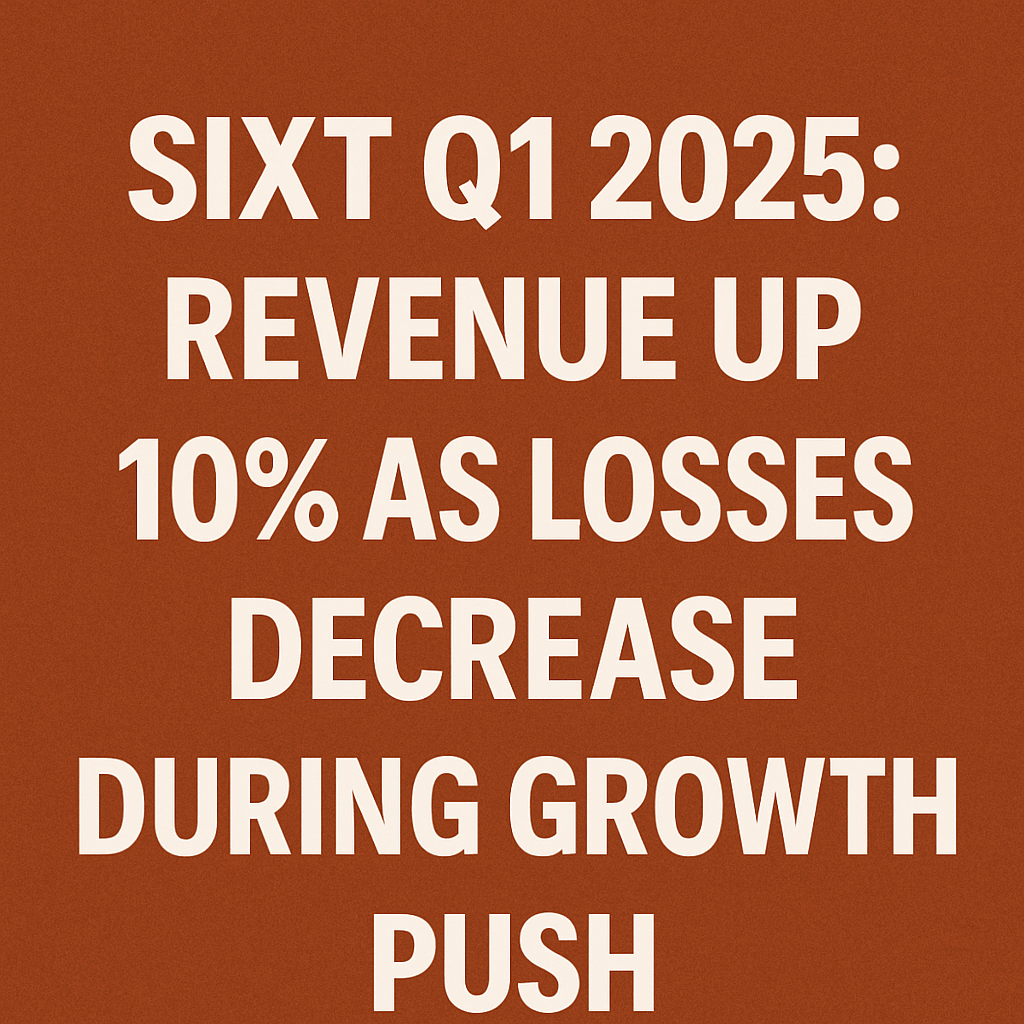Sixt Q1 2025: Revenue Up 10% as Losses Decrease During Growth Push

On Tuesday, shares of Germany’s leading mobility provider Sixt SE dipped nearly 4% around midday trading, following the release of a mixed first-quarter earnings report for 2025. While the company delivered double-digit revenue growth, it remains in the red on an earnings-before-tax basis.
Key Financial Metrics
- Revenue: €858.1 million (+10% year-on-year)
- German Division: Stable at €243.3 million
- Europe (Ex-Germany): €296.5 million (+13.8% YoY)
- EBT: –€17.6 million (improved from –€27.5 million in Q1 2024)
- Net Income: –€12.6 million (versus –€23.1 million prior year)
Regional Performance Breakdown
Sixt’s strong performance in Europe outside its home market underscores robust demand for flexible mobility solutions. In addition to the core car-rental business, Sixt has expanded its ride-hailing and car-sharing units, which now contribute approximately 20% of group revenue.
German Market
Although flat year-on-year, local volumes benefited from optimized fleet utilization and dynamic pricing algorithms. The company has deployed IoT-enabled telematics across 80% of its German fleet to improve turnaround times and reduce maintenance costs by an estimated 5%.
Broader European Growth
Double-digit growth in southern and central Europe reflects ongoing strategic partnerships with local ecommerce platforms and holiday‐season fleet scaling. Sixt’s latest EV pilot in Scandinavia saw 25% higher utilization rates compared to internal combustion vehicles in Q1.
Strategic Initiatives & Technology Investments
Management reiterated its commitment to technology-driven expansion. Recent investments include:
- Digital Booking Platform: AI-powered dynamic pricing and personalized upselling modules rolled out across 12 countries.
- Electric Vehicle Fleet: Plans to increase EV share to 30% by mid-2026, leveraging fast-charging partnerships to reduce downtime.
- Connected Car Services: Telematics data used for predictive maintenance, reducing unplanned repair events by up to 15%.
“Sixt is maintaining its expansion course for all regional segments, with profitable growth remaining the top priority,” the company said. “We expect demand for mobility products to continue rising, and confirm our 2025 forecast: revenue growth of 5–10% and an EBT margin near 10%. ”
Expert Commentary
Analyst Perspective: According to Katharina Meier, lead transport analyst at Global Mobility Insights, “Sixt’s diversified mobility offerings and early shift toward electrification are differentiators versus peer car-rental operators. However, the path to positive EBT will depend on sustained volume growth and cost control in vehicle acquisition.”
Outlook & Market Context
Globally, the car-rental sector has rebounded post-pandemic, driven by tourism recovery and corporate travel. But rising vehicle procurement costs—particularly for EVs—pose margin pressures. Sixt’s target EBT margin of 10% implies continued discipline on fleet financing and robust utilization rates above 75%.
Deeper Analysis
1. Fleet Financing Structure
Sixt uses a mix of operating leases and sale-and-leaseback instruments to optimize balance-sheet impact. As of Q1, debt-to-equity stood at 1.1x, within management’s target range of 0.8–1.2x, supporting credit ratings at investment-grade levels.
2. Competitive Landscape
Major rivals such as Hertz and Europcar are also expanding digital services and EV fleets. Sixt’s tech investments aim to close the gap in customer loyalty programs and integrated mobility packages that bundle car-sharing, ride-hailing, and subscription offerings.
Read on YieldRadar.info for more market insights and expert analysis.